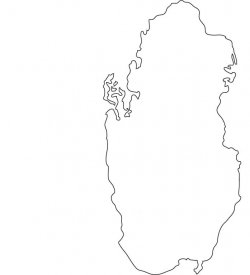
أجهزة الملاحة العربية
Your way to more knowledge
Product successfully added to your shopping cart
Quantity
Total
There are 0 items in your cart.
There is 1 item in your cart.
Total products
Total shipping
To be determined
Total
- Countries of the World
- Zip code in Jordan
- List of surahs in the Holy Qur'an
- All flags of the countries of the world
- Traffic signs in Jordan
- Population of world countries by country
- List of world capitals
- Car Brand Logos and Names
- International Calling Codes
- List of currencies of the world
- Country flags of the world with images and names
- Country codes names
- List of countries and dependencies by area
- Al-Quran Recitations mp3
- List of countries and dependencies by population
- World time zones by country
Qatar
Official name: State of Qatar
Also known as: Dawlat Qaṭar, دولة قطر
Capital of Qatar: Doha
Area of Qatar: 11,586 km² (4,473 mi²) (163nd)
Population of Qatar: 3,048,423 (137th) - (2024 est.)
Location: Southwestern Asia, Middle East
Languages of Qatar: Arabic (official), English commonly used as a second language
Religions of Qatar: Muslim (official) 65.5%, Christian 15.4%, Hindu 14%, Buddhism 3%, Other religions/Unaffiliated 2% (2020 est.)
Organizations: United Nations, Organization of the Petroleum Exporting Countries
Border countries (1): Saudi Arabia 60 km
Coastline: Persian Gulf 563 km
Maritime boundaries: Persian Gulf
Qatar, officially the State of Qatar, (Arabic: قطر) — is a rich Arab state occupying a small peninsula extending into the Persian Gulf to the north of Saudi Arabia. Many come to the Middle East seeking the mystic, traditional life of the Bedouins, wandering the desert with their life's belongings on a camel's back. Although tradition is still an important part of the Qatari ethos, the country has well and truly moved into the twenty-first century with the piercing glass skyscrapers of Doha, a booming trade sector and a new-found place in international diplomacy. Qatar offers a unique blend of cultural authenticity and modern luxury, due its role in the tourism sector. It offers a variety of heritage-based attractions that appeal to both domestic and international tourists.
Administrative divisions in Qatar
8 municipalities (baladiyat, singular - baladiyah):
Al Daayen, Ad Dawhah (Doha), Al Khor, Al Wakrah, Al Rayyan, Al-Shahaniya (new in 2015), Al Shamal, Umm Salal.
Natural resources: petroleum, natural gas, fish.
Area of Qatar: 11,586 km² (4,473 mi²) (163nd)
Population of Qatar: 3,048,423 (137th) - (2024 est.)
Location: Southwestern Asia, Middle East
Languages of Qatar: Arabic (official), English commonly used as a second language
Religions of Qatar: Muslim (official) 65.5%, Christian 15.4%, Hindu 14%, Buddhism 3%, Other religions/Unaffiliated 2% (2020 est.)
Ethnic groups in Qatar: Arab 49%, South Asian 43% [Indian 21.8%, Bangladeshi 12.5%, Pakistani 4.7%, Sri Lankan 4.35%], other 7% - (2019 est.)
Currency: Qatari riyal (QAR)
Time zone: UTC+3 (ASTArabia Standard Time, or AST (indicated by KSA on some Arabic TV stations), is used by some of the countries in the Middle East. As this time zone is predominantly in the equatorial region, there is no significant change in day length throughout the year, so daylight saving time is not observed. Between 1982 and 2007, Iraq observed Arabia Daylight Time (UTC+04:00) but the government abolished DST in March 2008.)
Calling code: (+974)Organizations: United Nations, Organization of the Petroleum Exporting Countries
Border countries (1): Saudi Arabia 60 km
Coastline: Persian Gulf 563 km
Maritime boundaries: Persian Gulf
Qatar, officially the State of Qatar, (Arabic: قطر) — is a rich Arab state occupying a small peninsula extending into the Persian Gulf to the north of Saudi Arabia. Many come to the Middle East seeking the mystic, traditional life of the Bedouins, wandering the desert with their life's belongings on a camel's back. Although tradition is still an important part of the Qatari ethos, the country has well and truly moved into the twenty-first century with the piercing glass skyscrapers of Doha, a booming trade sector and a new-found place in international diplomacy. Qatar offers a unique blend of cultural authenticity and modern luxury, due its role in the tourism sector. It offers a variety of heritage-based attractions that appeal to both domestic and international tourists.
Administrative divisions in Qatar
8 municipalities (baladiyat, singular - baladiyah):
Al Daayen, Ad Dawhah (Doha), Al Khor, Al Wakrah, Al Rayyan, Al-Shahaniya (new in 2015), Al Shamal, Umm Salal.
Natural resources: petroleum, natural gas, fish.

